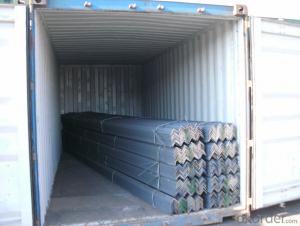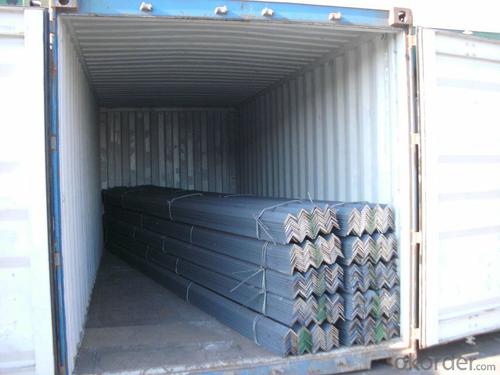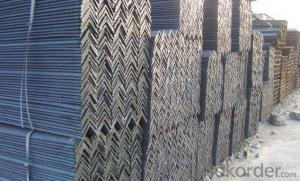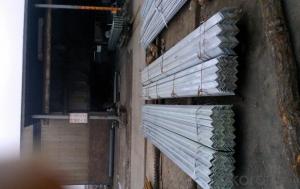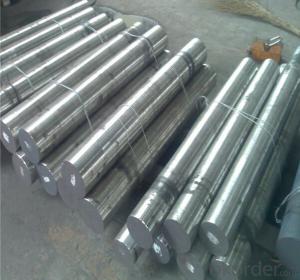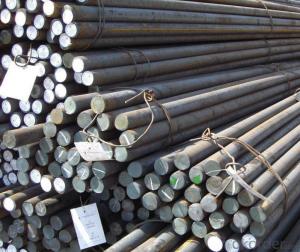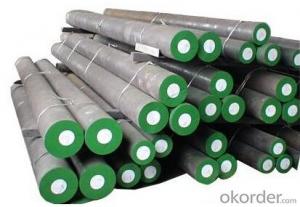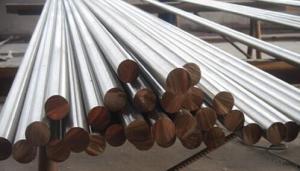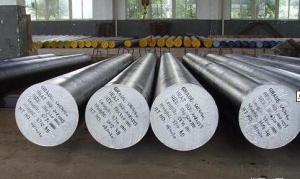Supply 2015 Alloy Steel Angle Bar from CNBM
- Loading Port:
- Tianjin
- Payment Terms:
- TT OR LC
- Min Order Qty:
- 25 m.t.
- Supply Capability:
- 20000 m.t./month
OKorder Service Pledge
OKorder Financial Service
You Might Also Like
Specification
OKorder is offering high quality Hot Rolled Steel Angle at great prices with worldwide shipping. Our supplier is a world-class manufacturer of steel, with our products utilized the world over. OKorder annually supplies products to European, North American and Asian markets. We provide quotations within 24 hours of receiving an inquiry and guarantee competitive prices.
Product Applications:
Hot Rolled Steel Angles are ideal for structural applications and are widely used in the construction of buildings and bridges, and the manufacturing, petrochemical, and transportation industries.
Product Advantages:
OKorder's Steel Angles are durable, strong, and resist corrosion.
Main Product Features:
· Premium quality
· Prompt delivery & seaworthy packing (30 days after receiving deposit)
· Corrosion resistance
· Can be recycled and reused
· Mill test certification
· Professional Service
· Competitive pricing
Product Specifications:
Manufacture: Hot rolled
Grade: Q195 – 235
Certificates: ISO, SGS, BV, CIQ
Length: 6m – 12m, as per customer request
Packaging: Export packing, nude packing, bundled
Sizes: 25mm-250mm | ||
a*t | ||
25*2.5-4.0 | 70*6.0-9.0 | 130*9.0-15 |
30*2.5-6.6 | 75*6.0-9.0 | 140*10-14 |
36*3.0-5.0 | 80*5.0-10 | 150*10-20 |
38*2.3-6.0 | 90*7.0-10 | 160*10-16 |
40*3.0-5.0 | 100*6.0-12 | 175*12-15 |
45*4.0-6.0 | 110*8.0-10 | 180*12-18 |
50*4.0-6.0 | 120*6.0-15 | 200*14-25 |
60*4.0-8.0 | 125*8.0-14 | 250*25 |
FAQ:
Q1: Why buy Materials & Equipment from OKorder.com?
A1: All products offered byOKorder.com are carefully selected from China's most reliable manufacturing enterprises. Through its ISO certifications, OKorder.com adheres to the highest standards and a commitment to supply chain safety and customer satisfaction.
Q2: How do we guarantee the quality of our products?
A2: We have established an advanced quality management system which conducts strict quality tests at every step, from raw materials to the final product. At the same time, we provide extensive follow-up service assurances as required.
Q3: How soon can we receive the product after purchase?
A3: Within three days of placing an order, we will begin production. The specific shipping date is dependent upon international and government factors, but is typically 7 to 10 workdays.
Alloy No | Grade | Element (%) | ||||
C | Mn | S | P | Si | ||
Q235 | B | 0.12—0.20 | 0.3—0.7 | ≤0.045 | ≤0.045 | ≤0.3 |
Alloy No | Grade | Yielding strength point( Mpa) | ||||
Thickness (mm) | ||||||
≤16 | >16--40 | >40--60 | >60--100 | |||
≥ | ||||||
Q235 | B | 235 | 225 | 215 | 205 | |
Alloy No | Grade | Tensile strength (Mpa) | Elongation after fracture (%) | |||
Thickness (mm) | ||||||
≤16 | >16--40 | >40--60 | >60--100 | |||
≥ | ||||||
Q235 | B | 375--500 | 26 | 25 | 24 | 23 |
Images:

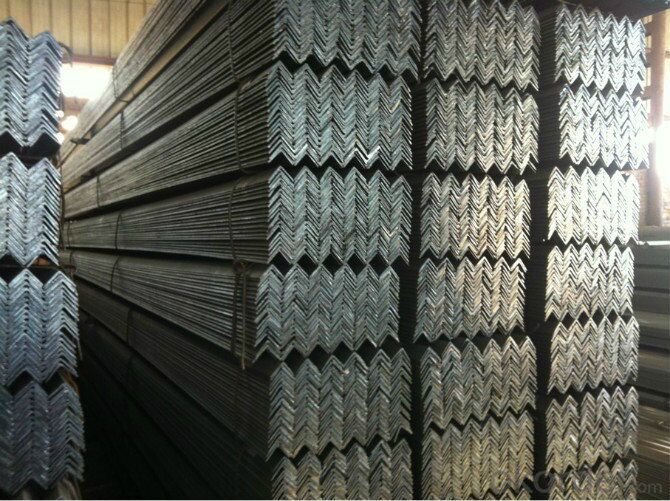
- Q: Are steel angles magnetic?
- Yes, steel angles are magnetic. Steel is a ferromagnetic material, which means it can be magnetized and attracted to a magnet. Steel angles, being made of steel, inherit this magnetic property. The presence of iron, along with other elements, in the composition of steel makes it responsive to magnetic fields. This property is often utilized in various applications such as in the construction industry, where steel angles are commonly used for structural support.
- Q: How do you connect two steel angles together?
- One common method to connect two steel angles together is through welding. Welding is the process of melting the edges of the angles and fusing them together using an electric arc or flame. This creates a strong and permanent connection between the two angles. Prior to welding, it is important to prepare the surfaces by cleaning them from any contaminants or rust. Additionally, aligning the angles properly and securing them in place with clamps or tack welds helps to ensure a precise and accurate connection. Another option to connect steel angles is through the use of bolts or screws. This method involves drilling holes through the angles and then using nuts and bolts or screws to fasten them together. It is crucial to select appropriate fasteners and ensure they are tightened securely to achieve a strong connection.
- Q: Are there any special considerations when handling or installing steel angles?
- When handling or installing steel angles, there are several special considerations that need to be taken into account. To begin with, it is crucial to store and transport the angles correctly in order to prevent any damage. To avoid rusting, make sure to store the steel angles in a dry and well-ventilated area. When transporting them, ensure that they are properly secured to prevent accidents or injuries. Next, it is essential to install the steel angles on a solid and level surface to guarantee stability and proper distribution of the load. For accurate installation, it is recommended to use a level and plumb line. Furthermore, it is of utmost importance to use the appropriate size and type of fasteners when installing steel angles. The fasteners must be compatible with both the angle and the material it is being attached to. Additionally, ensure that the fasteners are tightened properly to avoid any loosening or failure. Moreover, the load-bearing capacity of the steel angles should be carefully considered. Select angles based on the expected load and the requirements of the application. It is advisable to consult with a structural engineer or a professional to determine the suitable size and type of steel angles for your specific project. Lastly, maintain safety precautions when handling and installing steel angles. Wear protective gear, such as gloves and safety glasses, to prevent injuries. Additionally, follow safe lifting practices and use appropriate lifting equipment for heavy steel angles. In conclusion, it is important to give due consideration to these special factors when handling or installing steel angles to ensure proper installation, structural integrity, and safety.
- Q: Can steel angles be used for sound barriers?
- Yes, steel angles can be used for sound barriers. Steel angles are commonly used in construction and can be suitable for sound barrier applications due to their durability, strength, and ability to absorb and block sound.
- Q: Can steel angles be used for staircase handrails?
- Yes, steel angles can be used for staircase handrails. They are commonly used due to their durability, strength, and versatility in design. Steel angles provide a sturdy support system for staircase handrails and can be customized to fit different styles and preferences.
- Q: How do you determine the appropriate size of steel angle for a specific application?
- To determine the appropriate size of steel angle for a specific application, factors such as the load it needs to bear, the length of the span, the type of material being supported, and any applicable building codes or regulations should be considered. Structural engineers or professionals with expertise in steel construction can perform calculations and analysis to determine the required size of steel angle based on these factors.
- Q: What are the dimensions of a standard steel angle?
- The specific requirements and standards determine the dimensions of a standard steel angle, which can vary. Generally, it is a structural steel member in an L shape with legs that may be equal or unequal. The standard dimensions usually encompass the overall length, width, and thickness. For instance, one might find a standard steel angle with an overall length of 20 feet, a width of 2 inches, and a thickness of 1/4 inch. Nevertheless, it is crucial to acknowledge that the dimensions may differ depending on the specific application and industry standards.
- Q: What are the different types of steel angles used in bridges?
- There are several types of steel angles used in bridges, including equal angles, unequal angles, and L-shaped angles. These angles are commonly used to provide structural support and reinforcement in bridge construction.
- Q: Are steel angles resistant to fire?
- Fire resistance is generally attributed to steel angles. Steel, being a non-combustible substance, does not burn or aid in the propagation of fire. However, it should be noted that while steel itself is fire-resistant, it can lose its strength when exposed to prolonged high temperatures. In the event of a fire, the temperature can rise rapidly and cause the steel to weaken, potentially compromising the structural integrity of a building or component. To improve fire resistance, fire-resistant coatings such as intumescent paint or fireproofing materials can be applied to steel angles. These coatings offer additional insulation, delaying the steel's exposure to high temperatures and preventing failure. Ultimately, the fire resistance of steel angles depends on several factors, including the duration and intensity of the fire, as well as the measures taken to enhance their fire performance. To ensure the appropriate level of fire resistance for steel angles in a specific application, it is crucial to consult with fire protection experts and adhere to building codes and regulations.
- Q: What is the cost of steel angles?
- The price of steel angles may differ based on a variety of factors, including the steel type, angle length and thickness, and the supplier. Typically, the current market rates for steel dictate the cost of steel angles, which can change periodically. To obtain precise price quotations for the steel angles you need, it is recommended to get in touch with various suppliers or consult online platforms.
Send your message to us
Supply 2015 Alloy Steel Angle Bar from CNBM
- Loading Port:
- Tianjin
- Payment Terms:
- TT OR LC
- Min Order Qty:
- 25 m.t.
- Supply Capability:
- 20000 m.t./month
OKorder Service Pledge
OKorder Financial Service
Similar products
Hot products
Hot Searches
Related keywords
